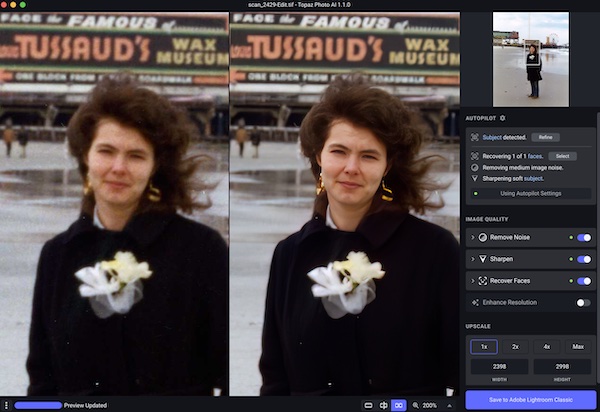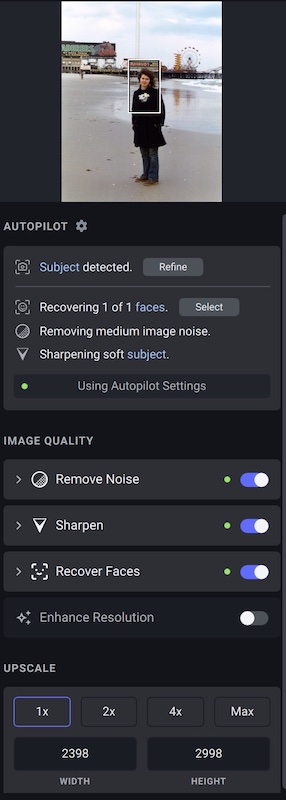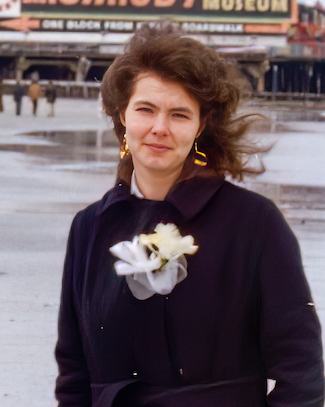Online Magazine
Recent Posts
- Safeguard your Cellphone Photos
- Black & White to Color – Instantly
- Wearing Many Hats
- Video Roundup
- Rescuing Your Blurry Pictures
- Showing Their Age
- What is Your Angle?
- Panorama Photos
- Humorous Photos
- Close Ups
- Fisheye Pictures
- Photo Antiquities
- Printing Big
- Appreciating Scale
- Celebrity Sightings
Tags
More Places to Go
- Free "How-To" Books “How To” books for popular cameras 0
- Vist Us on Facebook keep in touch with us on Facebook 2
Archives
- July 2023 (1)
- March 2023 (2)
- February 2023 (1)
- December 2022 (1)
- October 2022 (1)
- September 2022 (8)
- August 2022 (9)
- July 2022 (1)
- June 2022 (1)
- June 2021 (1)
- May 2021 (1)
- March 2021 (5)
- February 2021 (4)
- January 2021 (2)
- April 2019 (1)
- March 2019 (1)
- February 2019 (1)
- October 2018 (2)
- April 2018 (1)
- March 2018 (4)
- February 2018 (1)
- November 2017 (1)
- August 2017 (1)
- June 2017 (1)
- April 2017 (1)
- March 2017 (5)
- February 2017 (2)
- January 2017 (1)
- October 2016 (1)
- September 2016 (1)
- August 2016 (1)
- July 2016 (1)
- May 2016 (1)
- April 2016 (1)
- March 2016 (2)
- February 2016 (1)
- January 2016 (2)
- December 2015 (1)
- November 2015 (1)
- October 2015 (3)
- April 2015 (1)
- March 2015 (5)
- February 2015 (1)
- January 2015 (4)
- December 2014 (2)
- November 2014 (5)
- October 2014 (2)
- September 2014 (1)
- August 2014 (2)
- July 2014 (1)
- May 2014 (1)
- April 2014 (5)
- March 2014 (5)
- December 2013 (2)
- November 2013 (18)
- October 2013 (1)
- September 2013 (1)
- August 2013 (1)
- July 2013 (1)
- June 2013 (3)
- May 2013 (1)
- April 2013 (2)
- March 2013 (1)
- February 2013 (1)
- January 2013 (1)
- December 2012 (1)
- November 2012 (2)
- October 2012 (2)
- September 2012 (5)
- August 2012 (2)
- July 2012 (1)
- June 2012 (1)
- May 2012 (1)
- April 2012 (4)
- March 2012 (1)
- February 2012 (1)
- January 2012 (3)
- December 2011 (1)
- November 2011 (3)
- October 2011 (1)
- September 2011 (2)
- August 2011 (2)
- June 2011 (3)
- May 2011 (4)
- April 2011 (8)
- March 2011 (8)
- February 2011 (10)
- January 2011 (6)
- December 2010 (11)
- November 2010 (14)
- October 2010 (6)
- September 2010 (12)
- August 2010 (2)
- July 2010 (4)
- June 2010 (3)
- May 2010 (1)
- April 2010 (1)
- March 2010 (2)
- February 2010 (1)
- January 2010 (1)
- December 2009 (1)
- November 2009 (2)
- October 2009 (2)
- September 2009 (1)
- August 2009 (3)
- July 2009 (2)
- June 2009 (1)
- May 2009 (2)
- April 2009 (1)
- March 2009 (2)
- February 2009 (1)
- January 2009 (3)
Rescuing Your Blurry Pictures
02nd December 2022
The early days of picturetaking had me carefully setting up to take that spectacular photo, sending the film off to develop and patiently waiting for the prints come back from the photofinisher. Unexpectedly I experienced much disappointment when I looked through the returned pictures only to see my favorite subject as a blurred image. The cause may have been my sloppy focusing or me shaking the camera while using a slow shutter speed. No matter, the result was a missed opportunity.
When I review my large collection of photos – especially the older ones – I’m amazed how many aren’t “tack sharp”. Before the advent of autofocus cameras, we had to rely on manual focus techniques to keep the lens properly set. And before the advent of higher ISO film, we had to rely on stabilizing techniques to minimize the camera shake. In my younger days I must have been a photographer with sloppy habits and this explains why I have a bunch of blurry photos from back then.
A few weeks ago I learned of a software product that supposedly “fixed” blurred photos. After reading a couple of reviews of Topaz AI I decided to give it a try. In addition to sharpening images it can reduce image noise and can boost image resolution.
Topaz AI can be used by itself (standalone) or as a plug-in (helper) for Adobe Lightroom or Photoshop. I have used it as a standalone but most often as a plug-in for Lightroom.
Here’s a quick look at how Topaz AI can make those blurry pictures go away.
Below is a photograph taken with film in the early 1970’s using a manual focus camera. You can see that the original image on the left is not quite in focus.
For those of you who may be interested in this software, you can get a free trial version for either Mac or Windows personal computers. Visit Topaz Labs and look for the Photo AI package.
It’s time for CES again
04th January 2012
What’s in store for 2012?
The Consumer Electronics Show kicks off again in less than a week.
 |
For those of you who aren’t familiar with the CES, it’s a huge technology trade show at which the electronic and associated manufacturers showcase their new products. In recent years, CES has attracted more than 120,000 attendees to the Las Vegas Convention Center and surrounding venues. |
There are literally miles of aisles lined with home theaters, thundering auto audio systems, pulsating illuminated LED signs, massive large-screen televisions, deafening stereo systems and wacky computer game displays. It’s a crowded, noisy affair.
Despite the negatives, CES has been a “must” show for me. In fact, I find it an exciting place to be. So much so that I’ve been to attending this annual event (for a while it was held twice a year) for more than 30 years to learn and write about the new products that are applicable to our businesses. For the first time, the Photographic Marketing Association trade show is being folded into this year’s CES. I suppose this tells us that photographic equipment is now considered part of the consumer electronics realm. Merging of these trade shows into one makes it even more convenient for me to learn about new photo equipment as well.
On the photography side, I expect these will be the trend this year:
- There will be more offerings of high end interchangeable lens cameras (ILC). This relatively new breed are imirrorless and use real-time electronic viewfinders and are significantly smaller than DSLRs. The Nikon V1 and Sony NEX5 are current examples that have compelling and innovative features
- It looks like we’ll see big improvements in the video capability of both DLSRs and ILCs. The norm will be 1080p HD video, full-time autofocus amd complete manual control of exposure. These devices are reinventing the way in which video is recorded.
- Watch for even better images from cellphones. Some models already have large 8MP sensors with builtin flash. There is a striking difference in quality from last year’s models.
- Slowing sales of compact cameras hasn’t deterred manufacturers from improving image quality. In particular, the trend is towards better low-light performance by using more responsive image sensors and wider aperture lenses. This will most likely continue but at a higher price.
- Again with compacts the major brands are also competing aggressively on a feature basis. For example the Samsung SH100 has builtin wireless transfer and several company’s have cameras with builtin GPS. I expect that features such as these will become very popular.
- Last fall in China, I met with several manufacturers who were pushing easy to use, all-weather still and video cameras. This may become a popular category as the younger generation continues the YouTube tradition of recording and producing movies of their varied outdoor activities.
On the technology side I will be looking at these items:
- I just read that Microsoft will be showing their upcoming Microsoft Flight at the show This is of special interest to me as one of our other businesses sell software for their older Flight Simulator.
- There are likely to be a slew of new and improved tablet from a variety of manufacturers. Since the launch of the iPad, these devices have made a dramatic shift in mobile computing behavior. With the recent addition of reading devices such as Amazon’s Fire and Barnes & Noble’s Nook Tablet, the market is heating up quickly.
- Cellphones have made the most impact on consumer behavior in the last few years and I’ll be interested in seeing the new features that are upcoming.
- For several years, robotic devices have been randomly appearing at CES. For the most part, this promising technology has been confined to a few areas such as floor cleaning devices and children’s toys. I’m hoping to see new and innovative consumer-level robots at the show.
I’ll report back to you about the show soon.
Yes, I’m looking forward to another CES. By the way, I’m also looking forward to a few days away from the cold and snowy weather here in Michigan.
Written by Arnie Lee






